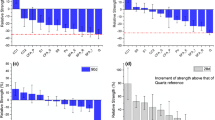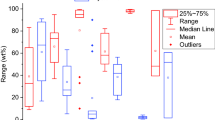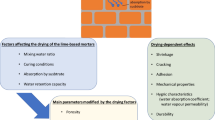Abstract
RILEM TC 267-TRM is studying tests for the reactivity supplementary cementitious materials (SCMs). In the first phase, the lime reactivity (LR) test, which is standardised in Indian standard (IS)-1727, gave promising correlations with 90-days cement mortar strength. In Phase 2, working group 1 has looked at further optimisation and robustness study of the LR test. A parameter screening approach for improving the mix design to use fixed mass proportions targeting enhanced reproducibility and robustness was focused. The parameters studied include mixture properties such as the effects of lime (hydrated lime/calcium hydroxide-CH) to SCM ratio, water to binder (binder = CH + SCM) ratio (w/b), activators, curing temperature, and testing age as well as the impact of factors from different national standards (IS and European Committee for Standardisation-EN) such as mould size, shape & type of sand. The modified mixture recommended by the TC uses a fixed CH to SCM mass ratio of 1:1 and the addition of activators. Also, a higher curing temperature of 50 °C in comparison to the 27 °C specified in IS 1727, for the first 2 days is proposed to accelerate the early hydration especially for slowly reacting SCMs. It is also recommended that, the minimum purity and fineness of the CH need to be specified to obtain reproducible results.











Similar content being viewed by others
References
Snellings R, Scrivener KL (2016) Rapid screening tests for supplementary cementitious materials: past and future. Mater Struct 49:3265–3279
Li X, Snellings R, Antoni M et al (2018) Reactivity tests for supplementary cementitious materials: RILEM TC 267-TRM phase 1. Mater Struct Constr. https://doi.org/10.1617/s11527-018-1269-x
IS 1727 (2013) Methods of test for pozzolanic materials. Bureau of Indian Standards, New Delhi, India
Avet F, Snellings R, Alujas Diaz A et al (2016) Development of a new rapid, relevant and reliable (R3) test method to evaluate the pozzolanic reactivity of calcined kaolinitic clays. Cem Concr Res 85:1–11. https://doi.org/10.1016/j.cemconres.2016.02.015
ASTM C1897 - 20 (2020), Standard test methods for measuring the reactivity of supplementary cementitious materials by isothermal calorimetry and bound water. ASTM International, Philadelphia, USA
Ranganath RV, Bhattacharjee B, Krishnamoorthy S (1998) Influence of size fraction of ponded ash on its pozzolanic activity. Cem Concr Res 28:749–761. https://doi.org/10.1016/S0008-8846(98)00036-2
Bahurudeen A, Wani K, Basit MA, Santhanam M (2016) Assesment of pozzolanic performance of sugarcane bagasse ash. J Mater Civ Eng 28:1–11. https://doi.org/10.1061/(ASCE)MT.1943-5533.0001361
Sharma RC, Jain NK, Ghosh SN (1993) Semi-theoretical method for the assessment of reactivity of fly ashes. Cem Concr Res 23:41–45. https://doi.org/10.1016/0008-8846(93)90133-T
Ravina D (1980) Optimized determination of PFA (fly ash) fineness with reference to pozzolanic activity. Cem Concr Res 10:573–580. https://doi.org/10.1016/0008-8846(80)90101-5
Shah V, Parashar A, Medepalli S, Bishnoi S (2018) Prediction of carbonation using reactivity test methods for pozzolanic materials. Adv Cem Res. https://doi.org/10.1680/jadcr.18.00144
Parashar A, Bishnoi S (2020) A comparison of test methods to assess the strength potential of plain and blended supplementary cementitious materials. Constr Build Mater. https://doi.org/10.1016/j.conbuildmat.2020.119292
Parashar A, Shah V, Bishnoi S (2018) Applicability of Lime Reactivity Strength Potential Test for the Reactivity Study of Limestone Calcined Clay Cement. In: Martirena F, Favier A, Scrivener K (eds) Calcined Clays for Sustainable Concrete. RILEM Bookseries, Springer, Dordrecht, pp 339–345. https://doi.org/10.1007/978-94-024-1207-9_55
ASTM C311 - 1987 (1987) Test methods for sampling and testing fly ash and natural pozzolans for use as a mineral admixture in concrete: pozzolanic activity test with lime (withdrawn in 1992). ASTM International, Philadelphia, USA
CSA A3004-08 E1 (2013) Standard practice for the evaluation of alternative supplementary cementing materials (ASCMs) for use in concrete. CSA Group, Mississauga, ON, Canada
Kasaniya M, Thomas MDA, Moffatt EG (2019) Development of rapid and reliable pozzolanic reactivity test method. ACI Mater J 116:145–154. https://doi.org/10.14359/51716718
Murat M (1983) Hydration reaction and hardening of calcined clays and related materials. I. Preliminary investigation on metakaolinte. Cem Concr Res 13:259–266
Kasaniya M, Thomas MDA, Moffatt EG (2021) Pozzolanic reactivity of natural pozzolans, ground glasses and coal bottom ashes and implication of their incorporation on the chloride permeability of concrete. Cem Concr Res 139:106259. https://doi.org/10.1016/j.cemconres.2020.106259
EN 196-1 (2016) Methods of testing cement - part 1: Determination of strength. European Committee for Standardization, Brussels, Belgium
EN 197-1 (2000) Cement Part 1: Composition, specifications and conformity criteria for common cements. European Committee for Standardization, Brussels, Belgium
IS 650 Specification for standard sand for testing of cement. Bureau of indian standards, New Delhi, India
Šavija B, Luković M (2016) Carbonation of cement paste: Understanding, challenges, and opportunities. Constr Build Mater 117:285–301. https://doi.org/10.1016/j.conbuildmat.2016.04.138
Acknowledgements
A. Parashar and S. Bishnoi acknowledge financial support by the Swiss Agency for Development and Cooperation (SDC) Grant 81026665. Aneeta Mary Joseph acknowledges the financial support from the foundations Strategic Initiative Materials (SIM) in Flanders and Flanders Innovation & Entrepreneurship (VLAIO) of Project ASHCEM within the program MARES. S. Dolenec acknowledges the financial support from the Slovenian Research Agency (research core funding No. P2−0273).
Author information
Authors and Affiliations
Corresponding author
Ethics declarations
Conflict of interest
All co-authors are members in RILEM TC 267-TRM. None of the co-authors has financial conflict of interest.
Additional information
Publisher's Note
Springer Nature remains neutral with regard to jurisdictional claims in published maps and institutional affiliations.
This report has been prepared by RILEM TC 267-TRM: Tests for Reactivity of Supplementary Cementitious Materials. The paper has been reviewed and approved by all members of the TC.
TC Membership: Chair: Karen Scrivener, Switzerland; Deputy Chair: Ruben Snellings, Belgium; Members: Edgardo Irassar, Yury Andrés Villagran Zaccardi, Argentina; Natalia Alderete, Özlem Cizer, Nele De Belie, Asghar Gholizadeh-Vayghan, Aneeta Mary Joseph, Belgium; Josée Duchesne, R. Doug Hooton, Mahipal Kasaniya, Michael Thomas, Canada; Sui Tongbo, China; François Avet, Martin Cyr, Siham Kamali-Bernard, Cédric Patapy, Serge Sabio, Laurent Steger, France; Mohsen Ben Haha, Pawel Durdzinski, Johannes Haufe, Xuerun Li, Matthias Maier, Karl-Christian Thienel, Anya Vollpracht, Simone Schulze, Johannes Pfingsten, Germany; Shashank Bishnoi, Manu Santhanam, Anuj Parashar, Yuvaraj Dhandapani, India; Milena Marroccoli, Antonio Telesca, Italy; Guang Ye, Shizhe Zhang, Netherlands; Klaartje De Weerdt, Malene Thostrup Pedersen, Norway; Sabina Dolenec, Marusa Mrak, Slovenia; Diana Londono Zuluaga, Frank Winnefeld, Marta Palacios, Mathieu Antoni, Switzerland; Susan Bernal Lopez, Alastair Marsh, John Provis, Brant Walkley, UK; Maria C.G. Juenger, USA.
Rights and permissions
Springer Nature or its licensor (e.g. a society or other partner) holds exclusive rights to this article under a publishing agreement with the author(s) or other rightsholder(s); author self-archiving of the accepted manuscript version of this article is solely governed by the terms of such publishing agreement and applicable law.
About this article
Cite this article
Parashar, A., Vollpracht, A., Haufe, J. et al. Report of RILEM TC 267—TRM: Improvement and robustness study of lime mortar strength test for assessing reactivity of SCMs. Mater Struct 55, 96 (2022). https://doi.org/10.1617/s11527-022-01911-1
Received:
Accepted:
Published:
DOI: https://doi.org/10.1617/s11527-022-01911-1




